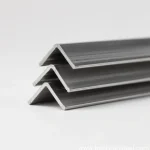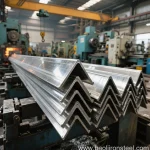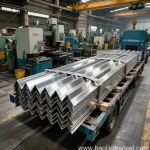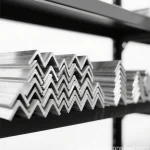Stainless steel is a cornerstone of modern engineering, prized for its corrosion resistance, mechanical strength, and versatility. However, the term “stainless steel” encompasses a vast array of alloys, each tailored to specific applications through variations in composition, microstructure, and processing. This article explores the classification of stainless steel grades, their chemical and mechanical properties, international standards, and industrial applications.
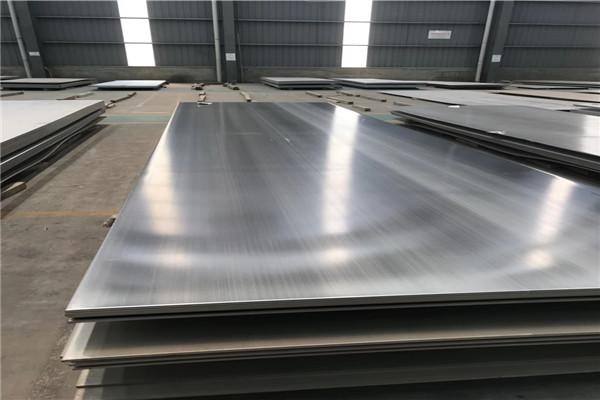
1. Classification of Stainless Steel Grades
Stainless steels are categorized into five primary families based on their microstructure and alloying elements:
1.1 Austenitic Stainless Steels
- Composition: High chromium (16–26%), nickel (6–22%), and low carbon (<0.15%). May include molybdenum, nitrogen, or titanium.
- Key Grades:
- 304 (AISI/SAE) / 1.4301 (EN): The most widely used grade, ideal for food processing, kitchen equipment, and architectural applications.
- 316 (1.4401): Enhanced corrosion resistance due to 2–3% molybdenum; used in marine and chemical environments.
- 321 (1.4541): Stabilized with titanium to resist carbide precipitation during welding.
- Properties: Non-magnetic, excellent formability, and weldability. Not hardenable by heat treatment.
1.2 Ferritic Stainless Steels
- Composition: Chromium (10.5–30%), low carbon (<0.1%), and minimal nickel. Often alloyed with molybdenum or aluminum.
- Key Grades:
- 430 (1.4016): Used in automotive trim, appliances, and nitric acid tanks.
- 444 (1.4521): High chromium and molybdenum for improved pitting resistance.
- Properties: Magnetic, moderate corrosion resistance, and lower cost than austenitic grades. Limited to thin sections due to poor weldability.
1.3 Martensitic Stainless Steels
- Composition: Chromium (12–18%), higher carbon (0.1–1.2%), and minimal nickel.
- Key Grades:
- 410 (1.4006): Used for cutlery, valves, and pump shafts.
- 420 (1.4021): Higher carbon for increased hardness (e.g., surgical instruments).
- Properties: Magnetic, heat-treatable (quenching and tempering), and high strength. Prone to corrosion in harsh environments.
1.4 Duplex Stainless Steels
- Composition: Balanced austenite-ferrite microstructure with chromium (21–26%), nickel (4–7%), molybdenum (2–4%), and nitrogen.
- Key Grades:
- 2205 (1.4462): Combines high strength and chloride resistance; used in offshore oil rigs and desalination plants.
- 2507 (1.4410): Super duplex grade for extreme corrosive environments.
- Properties: Twice the yield strength of austenitic steels, excellent stress corrosion cracking resistance.
1.5 Precipitation-Hardening (PH) Stainless Steels
- Composition: Chromium (15–17%), nickel (3–5%), and additives like copper, aluminum, or titanium.
- Key Grades:
- 17-4 PH (1.4542): Aerospace components and nuclear waste casks.
- 15-5 PH: Improved toughness over 17-4 PH.
- Properties: Can be heat-treated to achieve high strength (up to 1500 MPa) while retaining corrosion resistance.
2. Key Alloying Elements and Their Roles
- Chromium (Cr): Forms a passive oxide layer (Cr₂O₃) for corrosion resistance. Minimum 10.5% required for “stainless” properties.
- Nickel (Ni): Stabilizes austenitic structure, improves ductility, and enhances resistance to acids.
- Molybdenum (Mo): Boosts pitting and crevice corrosion resistance, especially in chloride-rich environments.
- Nitrogen (N): Increases strength and stabilizes austenite in duplex grades.
- Carbon (C): Enhances hardness but reduces corrosion resistance by forming chromium carbides (mitigated in “L” grades like 304L).
3. International Standards and Designations
Stainless steel grades are codified under multiple standards:
- AISI/SAE (USA): 3xx (austenitic), 4xx (ferritic/martensitic).
- EN (Europe): “1.xxxx” numbering (e.g., 1.4301 for 304).
- JIS (Japan): SUS304, SUS316.
- UNS (Unified Numbering System): S30400, S31600.
4. Mechanical Properties by Grade
| Grade | Yield Strength (MPa) | Tensile Strength (MPa) | Elongation (%) | Hardness (HB) |
|---|---|---|---|---|
| 304 | 215 | 505 | 70 | 201 |
| 316 | 240 | 515 | 60 | 217 |
| 430 | 310 | 450 | 20 | 183 |
| 2205 | 450 | 620 | 25 | 293 |
| 17-4 PH | 1170 | 1310 | 10 | 420 |
5. Applications Across Industries
- Construction: 304/316 for facades, bridges, and rebar.
- Chemical Processing: 316L, 904L (high Mo) for reactors and piping.
- Medical: 316LVM (low carbon, vacuum-melted) for implants.
- Energy: Duplex steels in offshore platforms; ferritic 409 in exhaust systems.
- Food & Beverage: Electropolished 304 for hygienic surfaces.
6. Selection Criteria for Stainless Steels
- Corrosion Environment: Chlorides demand Mo-bearing grades (316, 2205).
- Temperature: Austenitic grades perform well at cryogenic temps; ferritic steels suit high-temp oxidation.
- Fabrication Needs: Austenitic steels are easier to weld; martensitic grades require post-weld heat treatment.
- Cost Optimization: Use lean alloys (e.g., 430 instead of 304) where corrosion demands permit.
7. Emerging Trends
- Advanced High-Nitrogen Steels: For higher strength without compromising corrosion resistance.
- Additive Manufacturing: Customized PH and austenitic grades for 3D-printed aerospace parts.
- Sustainability: Recycling-friendly duplex steels to reduce lifecycle CO₂ emissions.
8. Conclusion
Selecting the optimal stainless steel grade requires a nuanced understanding of operating conditions, mechanical requirements, and economic constraints. From the ubiquitous 304 to the specialized super duplex alloys, each grade serves as a testament to metallurgical innovation. As industries push the boundaries of performance and sustainability, stainless steel will remain indispensable in solving tomorrow’s engineering challenges.
References
- ASTM A240 – Standard Specification for Chromium and Chromium-Nickel Stainless Steel Plate.
- EN 10088 – Standards for Stainless Steels.
- Davis, J.R. (1994). Stainless Steels. ASM International.
- International Molybdenum Association (IMOA). (2021). Guidelines for the Selection of Stainless Steel.



